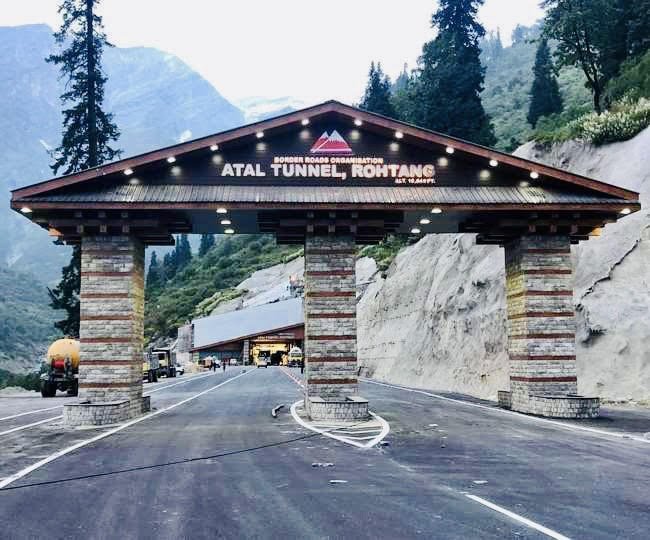ATAL TUNNEL-The Highest Altitude tunnel in the world


The Rohtang Tunnel is named as Atal Tunnel to honour contribution made by Atal Bihari Vajpayee

The 9.02 km long tunnel connects Manali to Lahaul-Spiti valley throughout the year. Earlier the road remained impacted for about six months every year owing to snowfall. The tunnel is built with ultra-modern specifications in the Pir Panjal range of Himalayas at an altitude of 3000 metres (10,000 feet) from the Mean Sea Level (MSL).
The feasibility study for the Atal Tunnel was first done in 1990. The foundation stone for the access road to the south portal of the tunnel was laid on May 6, 2002. The first blast took place in 2010 and the last blast in 2017. The tunnel was constructed using drill and blast NATM (New Austria Tunneling Method) techniques.

It reduces the road distance by 46 km between Manali and Leh and the time by about four to five hours. The hard work put in by Border Roads Organization in the last 10 years is reaching the final stage.
The South Portal (SP) of Atal Tunnel is located at a distance of 25 km from Manali at an altitude of 3,060 metres, while the North Portal (NP) of the tunnel is located near village Teling, Sissu, in Lahaul Valley at an altitude of 3,071 Metres.
It is horseshoe-shaped, single tube double lane tunnel with a roadway of 8 metres. It has an overhead clearance of 5.525 metres. Also, it is 10.5-metre wide and has a 3.6 x 2.25 metres fire-proof emergency egress tunnel built into the main tunnel itself. There are 18 egress tunnels where after every 500 metres there is an opening in case of emergency. If any fire incident happens so first thing is how the people trapped are to be rescued. For that there is an entry at every 500 metres.
Atal Tunnel has been designed for traffic density of 3000 cars per day and 1,500 trucks per day with max speed of 80 km/hr. It has the state of the art electromechanical system including semi transverse ventilation system.

Officials said the Border Roads Organisation (BRO) worked relentlessly to overcome major geological, terrain and weather challenges that included the most difficult stretch of the 587-metre Seri Nalah Fault Zone. The breakthrough from both ends was achieved on October 15, 2017.
The Tunnel has ample safety features built into it including telephone connections at every 150 metres for emergency communication, fire hydrant mechanisms at every 60 Metres, auto incident detection system with CCTV cameras at every 250 metres, air quality monitoring at every one Km, evacuation lighting/exit signs and broadcasting system throughout the tunnel among others.
The Prime Minister said that Tunnel will remain open throughout the year as opposed to the valley being cut off for about six months every year amid heavy snowfall.
The strategically important tunnel will also strengthen the country’s border infrastructure, Modi emphasised. “Be it bridges, tunnels, or road construction, development of border infrastructure will not only benefit the common man but also help the military,” he said.
Hailing the Make in India move, Modi said big reforms have been introduced to ensure modern weapons are produced in the country.
At Atal Tunnel inauguration, PM Modi says development of border infrastructure will benefit common man, army

DISCLAIMER: The author is solely responsible for the views expressed in this article. The author carries the responsibility for citing and/or licensing of images utilized within the text.
